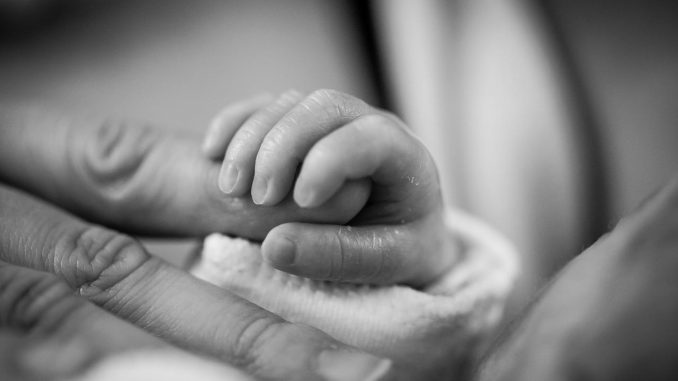
“Covid-19 due to the new coronavirus SARS-COV-2 was officially declared by WHO as a public health emergency of international concern on January 30, 2020, and then as a pandemic on March 12, 2020. Moroccan authorities declared a state of health emergency on March 20, 2020, followed by total containment and a series of measures to limit the adverse effects of the pandemic. These changes have had socio-economic and demographic impacts on the population, living conditions and social relations.
Indeed, “the containment has had impacts not only on mortality, but also on the contraction of marriages (-29.4% of acts, and especially mixed marriages with -62.4% of acts established) and their celebration, on the level and registration of divorces (-25% of divorce acts) and especially on the mobility of the population and migration,” said the HCP in a new study, dated April 2022, entitled “Social Indicators of Morocco.
Citing projections by CERED (Centre d’Etudes et de Recherches Démographiques), the HCP reports that the Moroccan population stood at 36.3 million on July 1, 2021, with a feminization rate of 50.2% and an urbanization rate of 63.9%. This expansion of urbanization is a combined result of the rural exodus, the development of the perimeter of cities and the reclassification of some rural localities, explains the institution headed by Ahmed Lahlimi.
It emerges from the structure of the population by age in 2021, continues the same source, a decline of more than half the share of the population of children (under 15 years) since 1960 to reach 25.6%. And this, due to the decline in fertility and increased life expectancy. At the same time, the same structure shows an increase in the elderly population (60 years and over) and the population of working age (15-59 years). They are 11.7% and 62.7% respectively.
The HCP emphasizes, moreover, that the demographic dependency ratio, after its downward trend since 1971 from 112.8 to 63.9% in 2004 and 60.3% in 2014 has reached its inflection point at 59.1% in 2018 and 2019 to be located at 59.6% in 2021.
The institution notes, moreover, that life expectancy at birth is estimated at 76.6 years (76.4 years in 2019) in 2020, or 74.9 years for men and 78.3 years for women (74.8 years and 78.2 years respectively in 2019). “If in the 1960s, the Moroccan expected to live on average 47 years at birth (57 years in urban areas and 43 years in rural areas), his life expectancy in 2020 has been extended by more than thirty years (78.3 years in urban areas and 73.4 years in rural areas). This gain is the result of the decline in mortality at different age groups and the improvement in living conditions and health,” explains the same source.
The HCP also tells us that the share of singles, after a continuous rise for decades, has declined between the last two censuses (2004 and 2014) from 39.7% to 34.8% (-4.9 points). This share fell for men from 45.7% to 40.9% (-4.8 points) and from 34.0% to 28.9% for women (-5.1 points).
This decline in the proportion of single persons, which is more marked among young people, represents a reversal of the general trend observed for decades. It has, however, benefited married status, with a gain of 5.0 points between the two periods (4.7 points among men and 5.2 points among women).
As for being single at age 50, the rate has maintained its rise for more than two decades, from 2.9% in 1994, 4.9% in 2004 to 5.1% in 2014 for men, and from 0.8% in 1994, 5.3% in 2004 to 6.7% in 2014 for women. In 2014, this increase was more pronounced in urban areas, where the rate reached 8.0% for women compared with 5.9% for men.
The HCP also reports that the age of marriage in Moroccan society has changed considerably: the age at first marriage for women is 25.5 years in 2018 compared to 26.3 in 2004 and 25.7 in 2014. This decline, which mainly concerns rural areas (0.9 points), is offset by a slight increase in urban areas (0.2 points).
The age at first marriage for men, on the other hand, gained 0.6 points, settling at 31.9 years in 2018, compared to 31.2 years in 2004 and 31.3 years in 2014. This gain is more urban, by 1 point, with the age at first marriage of urban men rising from 32.1 to 33.1 years between 2014 and 2018.
Citing data from the national population health survey, ENPS-2018 (National Survey on Family Planning, Fertility and Population Health), conducted by the Ministry of Health and Social Protection, the HCP stresses, on the other hand, that the maternal mortality rate has declined significantly.
For every 100,000 live births, maternal deaths due to childbirth-related causes have dropped from 332 to 227, and to 112, respectively in 1992, 2004 and 2010, reaching 72.6 in 2018. Despite this decline, the HCP points out, a gap of more than double remains between the two environments of residence (i.e., 44.6 in urban areas versus more than 111.1 in rural areas).
The HCP, based on data from the ENPS-2018, notes, on the other hand, that the infant mortality rate has reached 18.0 per thousand, recording a significant decline compared to 2010 (12.2 points). It is the male children who have seen their mortality rate drop significantly (a decline of 14.4 points) followed by children living in rural areas (with a decline of 13.7 points).
Finally, and with regard to child mortality and still according to the ENPS-2018, the HCP states that this rate is 4.23% (4% for girls and 4.5% for boys), recording a decline of 2.07 points, compared to that of 2010.
At the national level, this rate has declined more for boys (- 2.2 points) than for girls (-1.8 points only). It is the rural children who have seen their child mortality rate drop significantly (a decline of 2.5 points), says the same source.

Be the first to comment